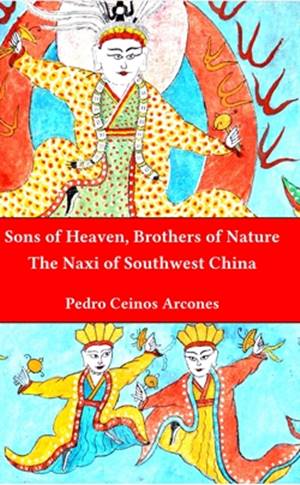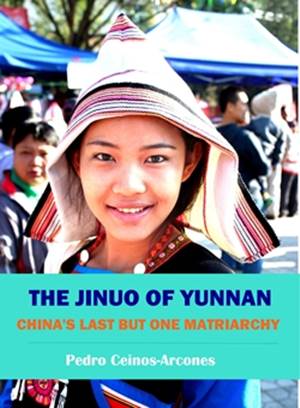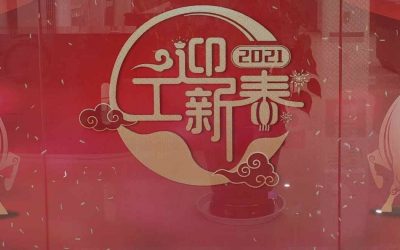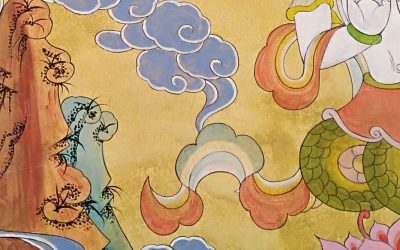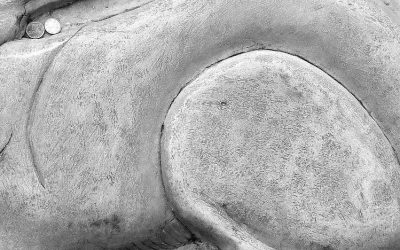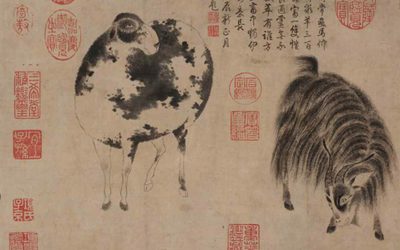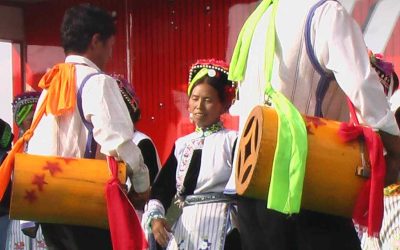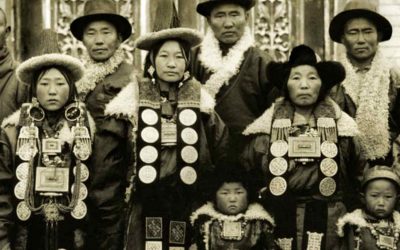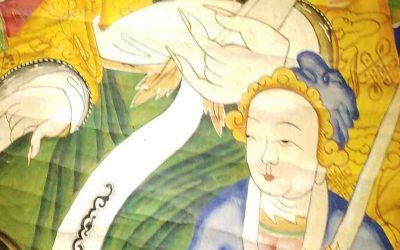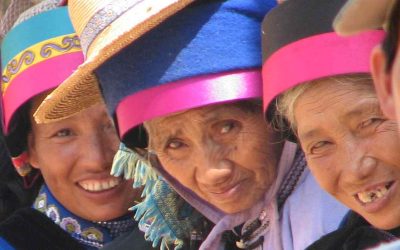Peter Harvey. Buddhism: Teachings, History and Practices. Cambridge University Press. 2013.
(Excerpts from the book. Page 11 and ff.)
In its origin, Buddhism was a Samana-movement. Samanas were wandering ‘renunciant’ thinkers who were somewhat akin to the early Greek philosophers and mystics. The Samanas rejected the Vedic tradition and wandered free of family ties, living by alms, in order to think, debate and investigate. The main Samana groups of Buddha’s time were:
JAINS
Jainism was founded, or at least led in the Buddha’s day, by Vardhamāna the Mahāvīra, or ‘Great Hero’. It teaches that all things, even stones, are alive, each containing a Jīva, or ‘Life-principle’. These are seen as individually distinct, rather like the Western idea of a ‘soul’ but unlike the universal Ātman of the Upanisads, and to be naturally bright, omniscient and blissful. The aim of Jainism is to liberate one’s Jīva from the round of rebirths by freeing it from being weighed down by an encrustation of karma, seen as a kind of subtle matter. The methods of doing so are primarily austerities such as fasting, going unwashed and pulling out the hair, so as to wear out the results of previous karma, and self-restraint, total non-violence to any form of life, and vegetarianism, so as to avoid the generation of new karma. The free-will of the Jīva is emphasized, though even actions such as unintentionally killing an insect are held to generate karma.
AJIVIKAS
Their founder was Makkhali Gosāla (Skt Maskarin Gośāla). Gosāla’s key doctrine was that niyati, or impersonal ‘destiny’, governed all, such that humans had no ability to affect their future lives by their karma: actions were not freely done, but were determined by niyati. Gosāla thus believed in rebirth, but not in the principle of karma as that which regulates the level of a person’s rebirth. The ‘Life-principles’ of living beings are driven by niyati alone through a fixed progression of types of rebirths, from a low form of animal to an advanced human who becomes an Ājīvika ascetic. The Ājīvikas practised rigorous asceticism such as fasting, nakedness and perhaps also disfiguring initiations, and aimed to die by self-starvation (as Vardhamāna in fact did), as a fitting way to end their last rebirth.
MATERIALISTS
The Materialists’ aim was to lead an abstemious, balanced life which enjoyed simple pleasures and the satisfaction of human relationships. They denied any kind of self other than one which could be directly perceived, and held that this was annihilated at death. They therefore denied the idea of rebirth, and also those of karma and niyati. Each act was seen as a spontaneous event without karmic effects, and spiritual progression was not seen as possible.
SKEPTICS
The Skeptics responded to the welter of conflicting theories on religious and philosophical issues, and the consequent arguments, by avoiding commitment to any point of view, so as to preserve peace of mind. They held that knowledge on such matters was impossible, and would not even commit themselves to saying that other people’s views were wrong. The Buddha saw this evasive stance as ‘eelwriggling’, though he shared the wish to step aside from the ‘jungle’ of conflicting views, and avoid dogmatic assertions built on flimsy grounds.
More posts on Chinese culture
History of Dunhuang, crossroads of cultures on the Silk Road
History of Dunhuang, crossroads of cultures on the Silk Road Dunhuang is one of the most fascinating cities on the Silk Road, although it now appears to be asleep, in the sleep that the improvement of communications in recent centuries has brought to the great...
Kyzil Grottoes – Primitive Buddhist art on the Silk Road
The Kyzil Grottoes - Primitive Buddhist art on the Silk Road The Kizil Grottoes are located on the cliffs of Minya Dag Mountain facing the Muzhati River, 7 km southeast of Kizil Township, Baicheng County, and about forty-three kilometers west of present-day Kucha,...
All you need to know about the ox in the Chinese horoscope
All you need to know about the ox in the Chinese horoscope The ox is a very beloved animal among the Chinese, despite its size, it is tame and peaceful, often in the villages, it is the youngest children who take it to the field to play, it rarely acquires the fierce...
The snake in the Chinese horoscope
The snake in the Chinese horoscope The snake is an ambiguous animal in the collective image of the Chinese people. On the one hand, it is considered similar to the dragon. Many Chinese authors recognize that the dragon, nonexistent, is nothing more than the...
The Rabbit in the Chinese horoscope
The Rabbit in the Chinese horoscope The rabbit is a tender and adorable animal, which highlights its extraordinary fertility, perhaps that is why in the Chinese horoscope is the animal most closely related to the moon, the female star par excellence. This...
The goat in the Chinese horoscope
The Goat in the Chinese horoscope The goat and the sheep are confused in the symbolism of Chinese culture, as both are written with the Yang character 羊, specifying that the sheep gives wool (绵羊) and the goat lives in the mountain (山羊), in general, both have an...
More posts on China ethnic groups
The Flood Myth, Shamans and the Sani Religion
The Flood Myth, Shamans and the Sani Religion We continue with the second chapter of Paul Vial “Los Lolos”, in which fragments dedicated to the myth of the flood and the activities of its shamans are particularly striking. CHAPTER II - RELIGIOUS TRADITIONS These...
There was a matriarchy among the Yugur?
There was a matriarchy among the Yugur? The matrimonial customs of the Yugur present differences between their two main groups. Among the Eastern Yugur, girls had a time of great sexual freedom. Their rite of passage was the ceremony of making the headdress, which was...
The Yugur of Gansu, descendants of the Kings of Dunhuang
o The Yugur of Gansu, descendants of the Kings of Dunhuang Name. Their Chinese name is Yugu, written 裕 固 族. The Yugu or Yugur call themselves Yaoyuer and Xilayuguer. The name Yugur is relatively recent, as it only began to be used after 1949. Population: About 13,000...
Two stories of Liu Ba, the Bai trickster
Two stories of Liu Ba, the Bai trickster The Bai are one of the minorities who have had the longest contact with the Chinese.They are also one of the minorities that has received more cultural influences. This has been due to the accessibility of the land they...
The history of the Sani of the Stone Forest
The history of the Sani of the Stone Forest As told by father Paul Vial in his book Les Lolos, Histoire, religion, mœurs, langue, écriture. The Lolos say they came from the region between Tibet and Burma, and at the very beginning of their history, they...
Danuohei, the stone village of the Sani minority
Danuohei, the stone village of the Sani minority Danuohei Village - (大糯黑村) is a Sani minority village. The Sani minority, actually a branch of the Yi, lives in the whole area around the Stone Forest until reaching Puzhehei, where one can also visit some beautiful...


